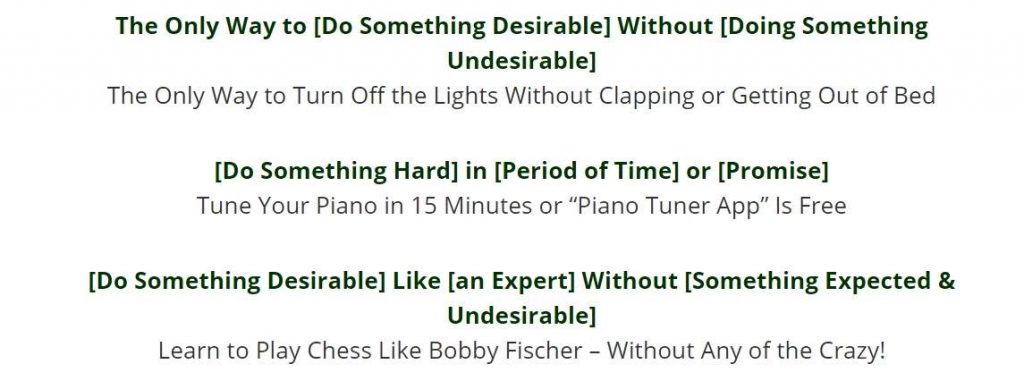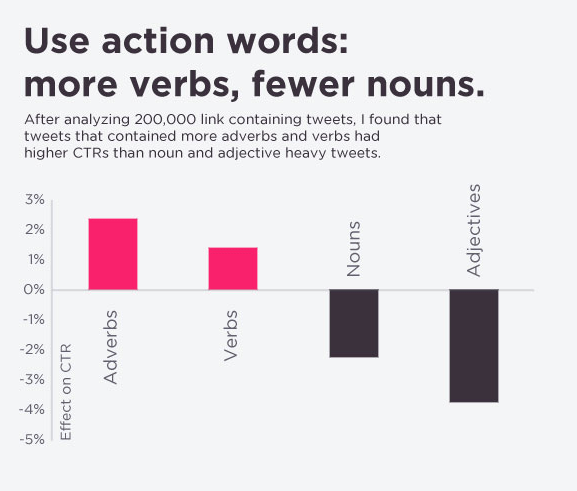
Don’t be too quick to dismiss CRO copywriting as yet another acronym invented to make you feel that you need to start everything from scratch.
The truth is that if you hired copywriters worth their salt, they are already using it, albeit they might call it something else.
In fact, I find the name to be a bit tautological: isn’t all copywriting supposed to be conversion-oriented?
That being said, I think you already have your first and most important hint about what CRO copywriting is.
But let’s dig a bit deeper, shall we?
What Is CRO Copywriting?
According to HubSpot, CRO (Conversion Rate Optimization) is
“The process of creating an experience for your website visitors that’ll convert them into customers.”
In other words: if your website now converts at 5%, through conversion rate optimization you could get that number up to 7%, 10% or even 20%.
Now to answer what is CRO copywriting: it’s the type of copywriting that boosts your conversion rate. Pretty logical, right?
Of course, there are more factors than copywriting when designing a high-converting website. The UX/UI are crucial elements that determine conversion rates.
However, I have seen plenty of websites with horrific design (think about the male enhancement niche, for instance), but amazing copy. And, yes, they had tons of conversions.
Why?
Because people care about the message.
If your copy is on point and well-targeted, then more than half the battle is won.
The key is having the type of copy on your website.
Naturally, the opinions on what CRO copywriting is exactly differ.
Copyhackers’ Joanna Wiebe says:
“Effective copywriting is not an art. It’s a science, first and foremost.”
She also has a scientific and well-planned method of creating high-converting copy, focusing on research, analyses, message creation and review.
Sid Barath has a similar idea:
“The other component of creating a persuasive and highly converting user experience is the website copy. Writing copy for the Web is a mix of art and science. It’s about weaving scientific persuasion tactics within prose and storytelling.”
But Ian Lurie of Portent disagrees:
“When you’re writing landing page copy, the first rule is there are no rules.”
What is the truth?
Well, as always it’s never simple. Having worked with so many great copywriters here at Idunn, I can only say that each and every one of them has their own specific process. Moreover, I’ve been often inclined to dismiss some of these processes only to later be surprised of their effectiveness.
Here’s the thing: some copywriters need the rigidity of a well-established formula to come up with effective copy. A template, a framework if you will is what helps them bring our clients results.
On the other hand, there are those who, in Ian’s words, simply follow their gut. They immediately grok what their audience responds to and they do an amazing job at putting it into words. Sometimes, their very first draft needs no more work – it’s perfect for publishing.
Which way is best, you ask?
Both.
When you hire copywriters, you should only care about the results they produce. The ROI they bring your website. Their approach and the time it took them to get there has little to no importance.
While the approach and whether or not you use a template doesn’t matter, there are a few tricks that our CRO copywriters use.
Let’s take a look at them.
How to Rock CRO Copywriting (Tips and Tricks from the Idunn Writers)
At Idunn, we have an internal guide on how to write high-converting landing page copy and other types of copy. I periodically update them with fresh information, as well as with input from our amazing writers.
The following are part of that internal guide and tricks from our CRO copywriters:
1. Pay Extra Attention to Headlines
Having great headlines is crucial for any type of written text. But when it comes to CRO copywriting, their importance grows exponentially.
The headline is the first thing your readers see when they arrive to your page. It has to hook them and to keep them reading on.
The best headlines make a promise (that you have to deliver on!). They promise success, fame, glory, or even a simple way to save a couple of hours every day.
Check out Joanna Wiebe’s easily customizable templates.

However, aside from being catchy, the headlines for CRO copywriting need to have one other important characteristic: they need to fit your sales funnel.
Your landing page doesn’t exist in a void.
Whenever we take on a new project for sales copy or for optimizing existing copy on a website, we start by asking where the traffic comes from.
Ads?
Organic traffic?
Email campaigns?
Whatever the answer, we need to see the copy at the beginning of the sales funnel (if we don’t create it ourselves).
And there’s a very good reason for this.
We need to make sure that the tone of voice and feel of the copy on the website (and especially the headline) match those of our client’s ad or email.
This is how we can ensure the continuity people need when they click on a link. They need to see they landed on the right page.
Here’s a practical example: we managed to increase the conversions of an e-commerce shop by working on this alignment. We started by optimizing the page, but saw very little change.
So we asked to see all the ads leading to it.
Turns out that they were posting ads for a specific pair of shoes. Let’s say black stilettos. But when the user clicked on the photo of the sexy shoes, they were brought to a pages with all the types of shoes available on the website.
The result?
Very few people had the patience to look for the shoes that initially caught their eye. Despite all the retargeting ads and the massive budget invested in the campaign, the conversion rate was still too small.
So we took on their social media management as well with a promise that we could improve conversion rates by modifying their misleading ads.
Our result?
10% increase in conversion rate by aligning the headline and the copy on the page with the copy in the ads.
2. Stick to the Point
We all want a bit of SEO juice to strengthen our CRO copywriting. So we tend to add a lot of clutter to our sales copy.
But we definitely shouldn’t!
This is not the place to speak about childhood memories or give specific details about the company history, fascinating as it may be.
The point of CRO copywriting is to sell.
So make your point. And make it quickly.
Avoid lengthy introductions and beating around the bush.
At the same time, don’t be curt when you don’t need to. If you have plenty of facts supporting your argument, display them.
3. Let the Numbers Speak
Got actual numbers?
Write them ALL!
Nothing says trustworthy than cold, hard numbers.
Instead of saying: “a lot of people trust us” say “we have 10,790 happy clients”.
Want people to register for your webinar? Tell them it’s in high-demand: “Join 378 professionals in your industry”.
Similarly, don’t say “save money”. Go for “save 20% (or, even better, save $178) by doing X”.
As always, there’s a caveat:
4. Make Sure You Can Support Your Claims
How exactly will I be saving those $178? If you can’t answer that, you’re in trouble!
Don’t just assume people are too lazy to do the math. They aren’t!
Plus, CRO copywriting isn’t about tricking people. It’s about selling and, preferably, selling more than once to a single customer.
Thus, be sure you can support each and every one of your claims before you hit “publish”.
5. Offer Social Proof
It would be nice to have a scientific study to back up each of the claims you make. Unfortunately, that’s rarely the case.
So you make do with what you have.
Your best bet are testimonials, case studies and shamelessly bragging with your high-profile clients.
Whatever industry you are in, at least one of the above can apply.
When you ask your clients to help you with testimonials and case studies, try to go as in-depth as possible and touch the most relevant pain points. If they simply say working with you was awesome, it’s a great start.
But it’s not enough.
Once again, try to get numbers out of them. How exactly have you helped them meet their goals or satisfy their needs?
6. Use Loss Aversion to Your Advantage
People hate to lose. Economists and psychologists sum this up with a simple example: people prefer not to lose $5 than to find $5.
So, instead of telling people what they could gain from buying from you, tell them what they stand to lose if they don’t:
“Don’t lose this exclusive discount – only valid for another 2 hours!”
“Hurry up! This webinar has limited seats and you might lose yours if you don’t register NOW!”
“If you cancel now, you’ll lose the data you already entered.”
You get the point: whatever your conversion goal, you can reach it faster if you tell people they run a risk of losing something important.
7. Use Action-Oriented Language
You might have noticed that all my examples so far have something in common. They push people to take action.
Which, of course, is exactly what you want and the ultimate goal of CRO copywriting.
This one’s pretty simple: avoid passive voice as much as possible. One of our favorite ways to do this is to use the zombie method. Briefly put, if you can add “by zombies” after a verb, you’ve got to change your wording.

Easy and fun!
Want your CTAs to be even more action-packed?
Of course you do!
Then use more verbs and fewer nouns.

Wrapping Things Up
CRO copywriting has to sell. Your value proposition and the way you put it into words are what determines whether the sale will be made or not.
Don’t take it lightly. An underperforming blog post isn’t a tragedy. But a sales page or web copy that doesn’t convert can cost you tens of thousands of dollars.
Still unsure how to rock CRO copywriting? No problem! We’re here to help!
Our expert copywriters have managed to generate millions of dollars for our clients by creating copy that speaks to their audience and SELLS!

